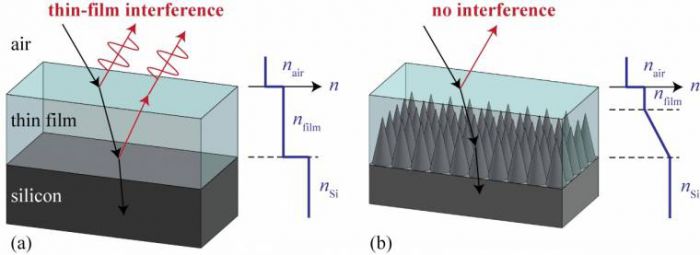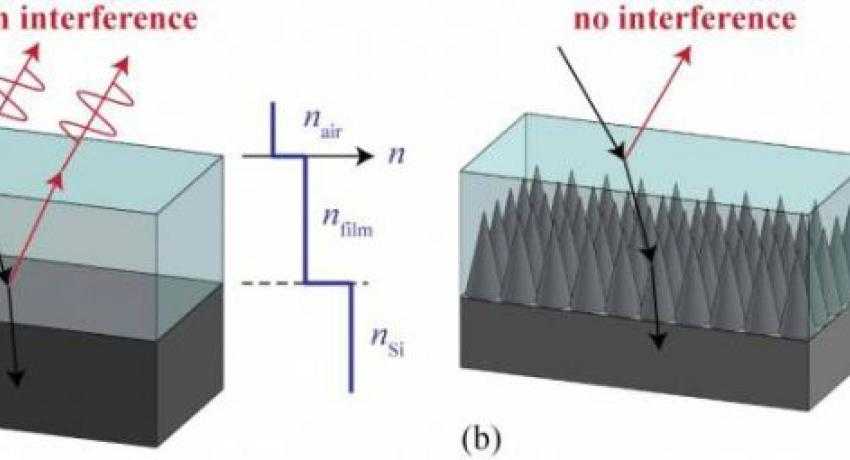Moth eyes inspire new solar technology

The natural world has often inspired science and where researchers at North Carolina State University turned for inspiration to harness light more efficiently in solar devices.
If you picture oil on a puddle or a soap bubble, they each resemble the sheen of rainbow. That is a reflection caused by the thin film of one substance layered on top of another. Where these two layers meet is called an interface.
North Carolina State researchers have created a nanostructure, inspired by the structure of moth eyes, that limits the reflection of light where two films meet.
While the concept of mimicking moth eyes, which don’t reflect light, has been around in the science world for a long time, the researchers found a new application, by embedding it into thin films which eliminate the color, said Chih- Hao Chang, assistant professor of mechanical and aerospace engineering at North Carolina state.
“We’re borrowing the principle inspired by nature and we’re applying it in a very different way,” he said.
Gasoline, for example, is transparent but some light is still reflected off its surface. Similarly some of the light that passes through the gasoline is reflected off the underlying surface where the two substances meet, a press release said. The light reflected has to pass back through the gasoline so it takes a different optical path than the light that was reflected off the surface of the gas. The mismatch of the optical paths creates the rainbow sheen and is known as thin-film interference.
For thin-film solar cells that means some light is lost every time thin films meet. The more thin films a device has, the more light is lost.
In solar cells, light goes through the first layer of material to the next. The goal is to have a high transmission of light with little reflection, capturing as much light as possible, Chang said.
The nanostructures are built into thin films that will have another film layered on top. The nanostructures can penetrate into the thin film layer on top and limit the amount of light reflected. Researchers found that when the nanostructures were used, 100 times less light was reflected than in interfaces where it wasn’t used, the release said.
The next step for the researchers is to incorporate the nanostructure into a solar device and see how it can be used for commercial applications.




